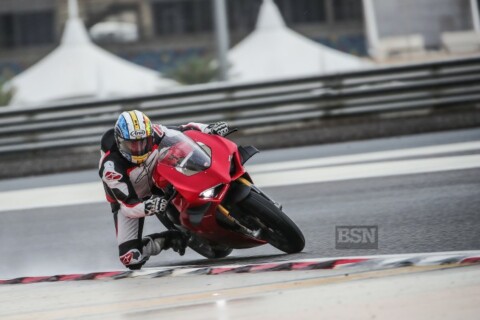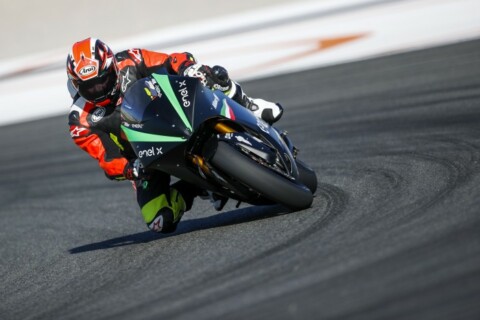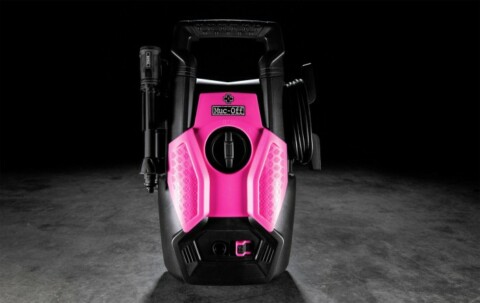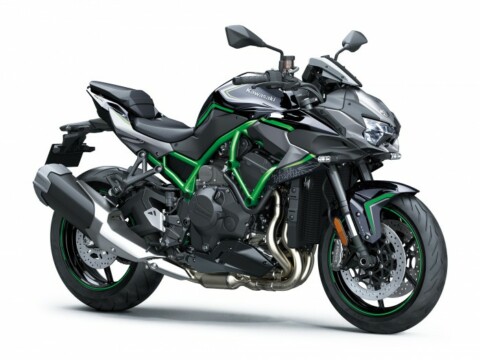A quarter-century of dashing blades…
CLICK HERE FOR SWEET PHOTO GALLERY
What were you up to in 1992? It’s further back than you might think actually, so to jog your memory, here’s some of the stuff that was going on. Bill Clinton wasn’t the US President yet – but he was elected in November of that year, beating the first George Bush. The Provos were still up to their tricks, bombing the Baltic Exchange in London. And The Shamen were at number one, telling us all how Goode Ebenezeer was…
No one needed any MDMA to see how good Honda’s latest superbike was though. The first CBR900RR was launched at Phillip Island, and the cynical, jaded hacks of Her Majesty’s British Press Corps came back even more fried than usual. This time, it wasn’t just the traditional mix of jet lag, free champagne and dancing girls which was the source of their discombobulation. Rather, the performance of this new bike – the FireBlade – had comprehensively wrecked the common-sense view of what a big bike was all about.
Up till then, litre bikes had plenty of grunt, but didn’t do so well in the twisties. If you were after nimble handling, you had to go for a 600 or a 750 – and if you wanted hammer-blow engine performance, you needed the heavyweights of the time. Beasties like Kawasaki’s ZZ-R1100 and Honda’s CBR1000F had lovely motors, but their 125bhp was blunted by 220kg dry masses, supertanker wheelbases and suspension that was aimed at comfort rather than speed.
Now though, there was a third way. The genius of designer Tadao Baba was to take a 750-sized superbike, then bump the capacity up, while shaving the mass down. There was nothing radical in terms of materials or space-age production techniques: Honda’s engineers didn’t need carbon fibre, titanium, glued frames or aerospace honeycomb construction. But smart design and inspired vision got 118bhp out of an 893cc four, which they housed in a short, sharp, 185kg chassis package – then sold it for sensible money to the man in the street.
Fast forward 25 years – 25! And we have a new Fireblade for 2017. The Blade lost its capital ‘B’ in 2004 (supposedly as a tribute to the end of Baba-san’s involvement in the model range), but it’s gained a lot more since 92. Fuel injection came in 2000 with the first 929 model, along with upside-down forks. We got a full 999cc motor in 2004, along with radial calipers, and with the latest Blade we (finally) have ride-by-wire throttle, up/down quickshifter, riding modes, and electronic suspension on the SP version.
Twenty-five years is one of those numbers which people love to celebrate of course – tradition dictates that it’s far more significant than 26, 27 or 31 years. And so Honda’s hired Rockingham circuit, and turned up with its heritage fleet of old Blades, together with a load of new ones, for a bit of a silver-anniversary jamboree. It’s also (sort-of) 25 years since the first ‘Type R’ Honda car, and they have a few of those along as well, so us bike monkeys can try to put them on their roofs.
Cars schmars though, amirite? Well, between me and you, I did have a ball in the new 315bhp Civic Type R on track, plus a very nice road session in a lush old Integra Type R. Woo!
But it’s the Blades I’ve come for – and the original 1992 one in particular. I’ve ridden several of them over the years, but it’s been a while since I last slung a leg over one, and I was keen to re-acquaint myself with this vital part of our superbike heritage. I’ve spent a fair bit of time on the 2017 bike this year, doing the launch at Portimao in Spain, and a few weeks testing one on UK roads and track – but any excuse to throw a modern litre bike round a circuit, as they say.
But it’s the road we hit first. I get a few miles on three or four of the old bikes – a 2000 929, a 2008 1000, and the 96 bike. But it’s the original that I’m most focussed on. The edge was taken off it a little by a slipping clutch and a set of brake pads which felt like they could have been the originals from the factory… The speedo was also fubar – though whether that’s an attempt to keep the miles down on the old bus, or simply a broken wire or sensor was unclear.
Poor prep aside, the 92 bike was, like most 25-year-olds on a big day out, a proper laugh, albeit a little naïve and uncivilised. The engine is still great – if you got one of these in a modern naked bike, say, and they called it an 800, it would still gain plaudits. There’s no huge rushes of top-end power, nor is there a tidal wave of low-down grunt, rather there’s just good, strong power everywhere, with a bit more urgency as the revs pass 8,000rpm (and the clutch plates let go ha). The throttle feels a bit sticky and rough compared with a modern ride-by-wire machine, but nothing some new cables and a strip/clean/lube of the carb pulley mechanism would sort.
Away from the motor and the poor brakes (the Nissin four-pot calipers are capable of much more when in good order), the Blade’s a treat to ride on the road. There are recent Bridgestone BT-016 tyres on there, which helps a lot, and while the old-skool fuel tank give a slightly ponderous impression, that’s an illusion that disappears when you tip into a bend. Sure, it’s a stable bike compared with some of the more modern sporting weapons, but there’s nothing stolid about its agility at all.
Finally, there’s something pure about the analogue riding experience. It’s not down to the carburettors – to me, fuel injection has been a match for carbs in terms of throttle feel for ages now. Rather it’s the lack of anything digital in the riding experience – no riding modes, no traction/launch/wheelie control, no ABS – not even a little LCD display for a clock. It’s riding like your dad (or even his dad) would relate to: only really a right-hand gearshift away from a 1950s Triumph. Albeit with four times the power, obviously.
It’s the second time today I’ve had that though: I had a drive round the local B-roads in that 1995 Integra Type R car earlier, which had 200hp and no electronic aids either. It’s a simpler existence – you don’t have to stop in a layby and scroll through a load of options to do a wheelie or a skid, or get the maximum power available. Everything’s down to the twist of your wrist…
Back at the track, and I get a couple of sessions round the infield circuit on the 2017 bikes – standard first, then the SP. I’ve to stay behind the instructor, so there’s no madness going on, but the sessions underline what I learned at Portimao in January and Bruntingthorpe in June – in isolation the new Blade is a treat on track, with really accessible litre bike performance, smooth power and easy handling. The SP in particular, with the SuperCorsa rubber, Brembo stoppers and electronic Öhlins front and rear is heaps of fun round here. Compared with the rest of the 2017 class, the new Blade isn’t top of the pile – but it’s a seriously good package in terms of a full-bore litre sportsbike.
Now, the schedule for the day hasn’t mentioned anything about riding the old bikes on track. I ask Tom, the nice Honda man, about this and he hums and haws – he’s definitely not keen on letting me loose on his cherished heritage fleet round here. I whinge and moan, and hold my breath till I turn blue, and he eventually gives in and lets me pop out on the 92 bike for some track pics. Woo!
It’s the end of the day, the sun is dipping behind the massive Potemkin stands round the Rockingham oval, and the head marshal at the track is tapping his watch as I pull out of pit lane on the original bad boy Blade. I’m conscious of the creaky brakes and tired clutch, and also very aware that there are plenty of eyes watching me out here. Tossing it in the gravel would be an extraordinarily dreary end to a fab day, so I’m taking great care round the first few bends.
But we do have some reasonable rubber on here, so once I’m sure they’ve warmed up a bit, I push a little harder, till the clutch calls time. The old bus is about 70bhp down on the 2017 bike, and it feels more like a decent modern 600 than a superbike. But despite the brakes and clutch, you quickly get the general idea. It tips into bends nicely, and feels really secure in the loooong multi-apex left-hand turn in the middle of the National circuit. The hairpin onto the start-finish straight is a tricky ask though, and the old Honda is a wee bit of a handful to muscle round the tight bend.
Another couple of laps, then it’s time to pull in. The day’s over, and it’s been a fascinating trip back to the early 1990s. What’s clear though, is that the 2017 Blade is nowhere near the original in terms of its impact. That 893cc work of genius properly re-defined what was meant by a superbike. And while the latest bike is a truly excellent machine, with stonking power, slick digital aids and sweet handling – the competition is at least on the same level, and often better.
But what the Blade does have, in spades, is heritage, class, legend and myth. And for a lot of folk, that’ll be far more important than an extra 10bhp peak power, or a couple of seconds on a lap of Brands GP…










